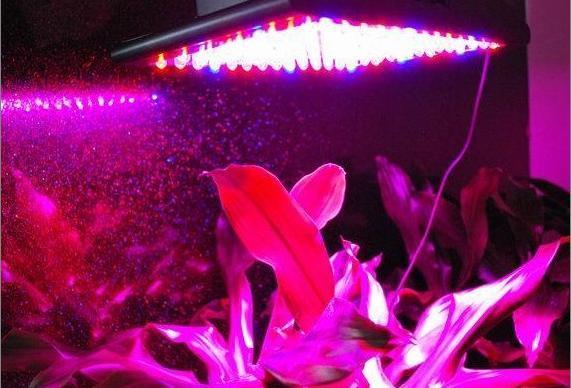Vegetables Grown With LED Grow Lights Taste Just As Good!
Writer:Jane Time:2018-07-10 Browse:150

In order to meet consumer demand for locally grown fresh tomatoes, greenhouse farms often rely on extra lighting to grow tomatoes out of season.
Farmers, however, are beginning to see the benefits of LED grow light as an alternative to high pressure sodium (HPS) lighting in greenhouses because of its energy efficiency. A recent study provides some insight into the feasibility of using LED lighting for greenhouse tomatoes.
Michael Dzakovich, Celina Gomez and Cary Mitchell, from the Department of Agriculture and Landscape Architecture at Purdue University in the US, published their findings in HortScience. They point to the emergence of LED lighting as an alternative to high pressure sodium lamps. "There has been considerable curiosity about the effects of phytochemicals and olfactory levels on high-value greenhouse crops that use LED lights as light sources," they note. However, there has been very little research to date on how fruit plants exposed to LED light for long periods of time grow into ripe tomatoes."
Greenhouse tomatoes receive natural sunlight supplemented by LED grow lights
The researchers conducted three separate studies to investigate the effects of the amount and quality of supplementary lighting on greenhouse tomatoes. The plants were respectively the control group with full natural sunlight irradiation, natural sunlight irradiation with HPS lamp auxiliary illumination, and natural sunlight irradiation with LED grow light . Scientists collected hue, sugar acidity (BRIX), titratable acidity (titratable acidity), electrical conductivity and pH pH to analyze how plants respond to lighting. "Contrary to our hypothesis, fruit quality was not affected at all by LED-assisted light sources," the researchers said.
The study also involved inviting teams of tasters to rank the color, acidity and sweetness of the tomatoes, using measuring instruments. Tasters must also evaluate the tomatoes for color, aroma, tactility, sweetness, acidity, aftertaste and overall feel. "After incorporating the biochemistry and actual tasting data, we can determine whether the data endorsed by the physical chemistry also reflects consumers' perceptions of tomato quality."
The tastings meant that physical differences in data were not discernible to them by tastings; In fact, the tasters were unable to tell the difference between tomatoes that received different auxiliary lighting and tomatoes that received no auxiliary lighting at all.
The study showed that the quality of the greenhouse tomatoes was not affected by the presence or lack of auxiliary lighting, and the physical and chemical measurements revealed only small differences between the different control groups, and the tasters confirmed that these differences were too small to be discernible.
The researchers say the findings have positive implications for farmers who want to introduce greenhouse LED lighting. "The intensity and wavelength of the LED-assisted light source did not have any negative effect on the quality of the greenhouse tomato results and showed that the LED-assisted light source is suitable as an alternative light source for HPS lamps with overheating problems."